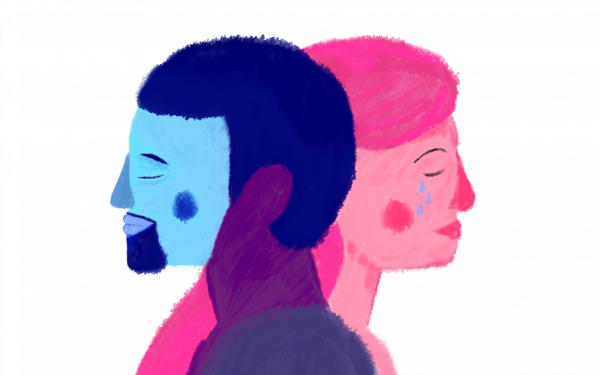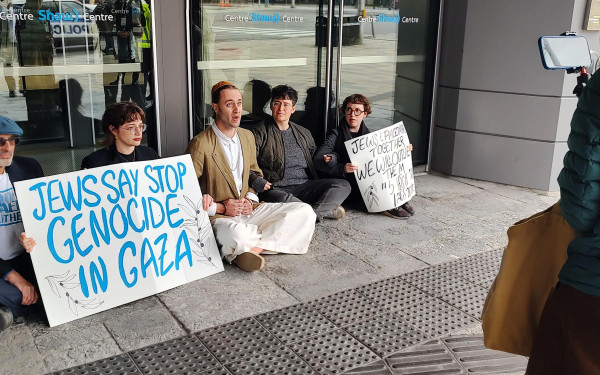Fight the Night
Women March Against Violence, Sexual Oppression
Clad in red and steadfast against spurts of pouring rain, 300 women gathered outside the Berri-UQAM Metro station on Sept. 24 for Take Back the Night, an annual march denouncing the violence and sexual exploitation of women.
Women of all generations, races and social classes came out chanting, cheering and banging pots and pans, demonstrating against sexual aggression—which statistics indicate effect one in three Quebec women over the age of 16.
“We walk in a time where women are still being raped, still being murdered, and are still being shamed. We walk in a time where violence by men against women is still a reality,” said Diane Matte, an organizer with the Montreal chapter of Concertation des luttes contre l’exploitation sexuelle. “Enough is enough!”
The march, organized by various Montreal community groups, originally captured the imagination of the women’s movement in Brussels in 1976. The first march that took place in Quebec saw 10,000 women in the streets.
This year, Take Back the Night was coordinated to bring attention to various contemporary incidents of sexual exploitation, specifically in solidarity with the more than 500 missing or murdered aboriginal women in Canada and the alarming number of women currently being raped in Hatian refugee camps. The event also brought attention to incidents such as the gang rape of a 16-year-old in Fraser Valley, B.C. that was broadcast over the Internet last week.
Take Back the Night also traditionally operates as a women-only space, with marchers demanding that men accept responsibility for the sexual oppression of women.
“It’s not that we don’t want men [to march] in solidarity [with us], and it’s not that we don’t think men are part of the solution, but the idea of having women-only space is still something that comes under attack and that a lot of people question,” said Rosalind Wong of the Montreal Movement against Rape and Incest. “But we’re here to get visibility for the specificity of women’s issues and to create safe space. We wanted to stay true to the traditions and convictions from when the marches first happened.”
“We walk in a time where violence by men against women is still a reality,”
-Diane Matte,
Take Back the Night organizer
The systematic and social responses to sexual violence against women also need to change dramatically to meet the needs of women, added Wong.
“Nearly 90 per cent of all incidents go unreported [and] a really pathetic minority of the cases of women who do report sexual violence ever make it to court,” she explained. “It’s because of how our legal system works: it excludes, intimidates and shames women who have experienced sexual violence. The legal system has to be made accessible.”
Making a point to walk through parks and darkened high-risk areas, the crowd snaked up Berri Street, down St. Denis Street, through the Village, over Ontario Street and through Parc La Fontaine before heading east down Mont Royal Avenue.
En route, the crowd engaged with bystanders and billboards, flyering and stickering over sexist advertisements as they went and ignoring a pack of men demanding them to “show us your tits.”
“For us to be able to walk through parks without fear, dressed how we wish and making noise is powerful,” said Christine Nadeau, who was working security alongside the movement. “We need to talk about it, we can’t hide it and we can’t believe it is something that does not exist today. It does exist, which is why we’re here tonight. When we walk, we mobilize.”
This article originally appeared in Volume 31, Issue 07, published September 28, 2010.

__900_549_90.jpg)
_600_832_s.png)




